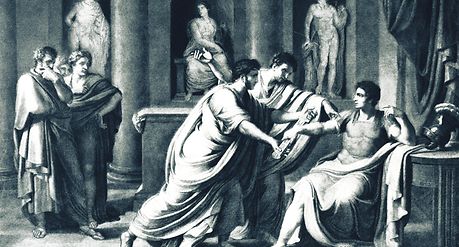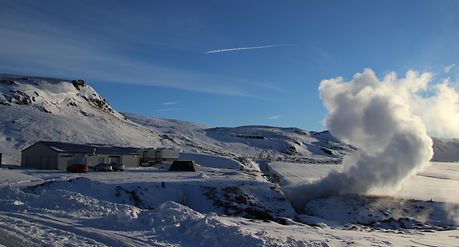Have a look at our categories
There is no I in Team
The origins of today's word “team” can be found in an Indo-European language strain stemming from the Latin verb "ducere" ("to lead"). In the 12th century, the word "tēam" emerged from this word stem in Old English. Despite its almost identical spelling, it had nothing in common with its modern meaning. It described a "'team of draught animals". Over time, the word took on a number of other meanings too: offspring, family, race, line, birth, brood, society, band. It was not until the 1520s that it first referred to "persons involved in a common action". Today, a team is seen as a group of people who are interdependent in terms of information, resources, and skills, trying to put their efforts together to achieve a common goal. The task to be performed usually determines the optimal size and composition.
Beyond entries and definitions in dictionaries and technical literature, we encounter teams, fictitious or real, also in various other areas. PUMPS has searched high and low for some examples and has made quite some findings. The following list, however, does not claim to be complete. It is only intended to illustrate the omnipresence of the concept of teams and teamwork.

The First Triumvirate
The First Triumvirate
In the year 60 BC, Gaius Iulius Caesar, Gnaeus Pompeius Magnus, and Marcus Licinius Crassus formed an unofficial alliance which was later called the First Triumvirate. This "three-man rule" was supposed to ensure "that nothing should happen in the state that would displease one of the three", wrote the Roman writer Sueton. This alliance was able to control and undermine all the political processes in the Republic - especially when Caesar later became consul and pushed through what the Triumvirn wanted.
All this was possible because the three men together brought everything they needed: Crassus, Rome's richest man, the money, Pompeius, the most successful general of his time, the military potential and numerous clients committed to him, Caesar, the consulate for the year 59 BC combined with political genius and unscrupulous energy. Since political friendship, the “amicitia”, had a firm place in Roman politics, the triumvirate was in principle nothing more than such a friendship and thus completely legal - in contrast to some measures initiated by the triumvirate.

Although Armstrong is the person associated with the first moon landing, his performance was only about 0.0005% of the total Apollo 11 team.
The Apollo 11 Team
Neil Amstrong. The first man on the moon. Although Armstrong is the person associated with the first moon landing, his performance was only about 0.0005% of the total Apollo 11 team. An estimated 400,000 scientists, engineers, and technicians worked in the background. Among them were seamstresses, who had sewn 21 layers of fabric into each space suit, and contractors located across the US, who had never made space parts before. When the 400,000 saw the historic walk on television on July 21st, 1969, everyone knew that he or she had been part of something special. This example shows that even the seemingly most insignificant work in a team can end up being incredibly rewarding.

A meeting of the Royal Society in Crane Court
The Royal Society of London
The Royal Society of London is a classic example of a strong team. Founded in 1660 and endowed with a royal charter by King Charles II, it was the world's first national scientific institution.
The Society was intended to promote the exchange of scientific and philosophical ideas and theories. Following the motto "Nullius in verba" ("take nobody's word for it"), each member was required to check all statements against scientific facts and experimental research results. Remarkable members over the years were the legendary Sir Isaac Newton, Charles Darwin, Albert Einstein, and Stephen Hawking.
Papers were exchanged between scientists, and within just 70 years the science we use today in everyday life was developed. These include the natural sciences of anatomy, astronomy, botany, chemistry, physics, and zoology. The achievements of the team are based on a foundation of trust, support, and respect as well as a common goal - the progress of science.

Climeon's first geothermal power plant in Iceland
Breakthrough energy
Founded in 2015, Breakthrough Energy is dedicated to ensuring that everyone on our planet can enjoy a good standard of living that covers basic needs such as electricity, healthy food, comfortable accommodation, and transportation. An important factor in this endeavor is that all this is achieved without contributing to climate change. A fund called Breakthrough Energy Ventures has been created to support those companies that can support this goal with their products, technologies, and innovations. Behind this initiative is a team that includes some of the world's leading businessmen and investors such as Jeff Bezos, founder and CEO of Amazon, Richard Branson, founder of Virgin Group, and Bill Gates, founder of Microsoft and co-chair of the Bill & Melinda Gates Foundation.
ANDRITZ has an indirect connection with this team through its customer Climeon. At the beginning of 2019, the fund subsidized the private investment company Baseload Capital with 12.5 million US dollars to further speed up the global deployment of low-temperature geothermal heat power. Parts of this company are owned by the former start-up Climeon, which has presented the first prototype of its Heat Power System for this application in 2011.
Are you wondering what role ANDRITZ pumps play in Climeon's innovative technology? Then continue reading in our magazine and also discover some more famous teams!



